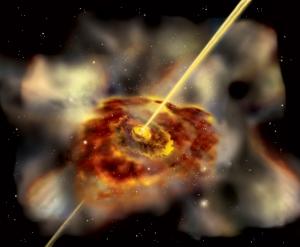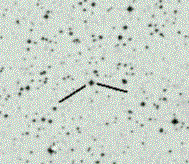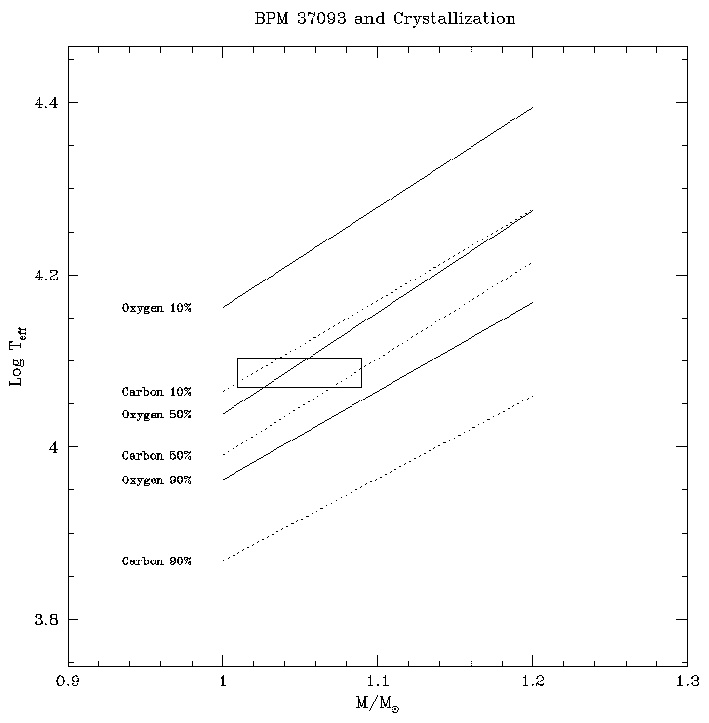its
bulk composition, orbital properties, atmosphere, and potential
chemical interactions. Stellar characteristics of importance
include mass and luminosity, stable variability, and high metallicity.
Rocky, terrestrial-type planets and moons with the potential for
Earth-like chemistry are a primary focus of astrobiological research,
although more speculative habitability theories occasionally examine
alternative biochemistries and other types of astronomical bodies.
Planetary habitability is the measure of a planet’s or a natural
satellite’s potential to develop and sustain life. Life may develop
directly on a planet or satellite or be transferred to it from another
body, a theoretical process known as panspermia. As the existence of
life beyond Earth is currently unknown, planetary habitability is
largely an extrapolation of conditions on Earth and the characteristics
of the Sun and Solar System which appear favourable to life’s
flourishing—in particular those factors that have sustained complex,
multicellular organisms and not just simpler, unicellular creatures.
Research and theory in this regard is a component of planetary science
and the emerging discipline of astrobiology.
An absolute requirement for life is an energy source, and the notion
of planetary habitability implies that many other geophysical,
geochemical, and astrophysical criteria must be met before an
astronomical body can support life.
Suitable star systems
An understanding of planetary habitability begins with stars. While

bodies
that are generally Earth-like may be plentiful, it is just as important
that their larger system be agreeable to life. Under the auspices of
SETI’s Project Phoenix, scientists Margaret Turnbull and Jill Tarter
developed the “HabCat” (or Catalogue of Habitable Stellar Systems) in
2002. The catalogue was formed by winnowing the nearly 120,000 stars of
the larger Hipparcos Catalogue into a core group of 17,000 “HabStars”,
and the selection criteria that were used provide a good starting point
for understanding which astrophysical factors are necessary to habitable
planets.
Planetary characteristics

The moons of some gas giants could potentially be habitable.
The chief assumption about habitable planets is that they are
terrestrial. Such planets, roughly within one order of magnitude of
Earth mass, are primarily composed of silicate rocks, and have not
accreted the gaseous outer layers of hydrogen and helium found on gas
giants. That life could evolve in the cloud tops of giant planets has
not been decisively ruled out, though it is considered unlikely, as they
have no surface and their gravity is enormous. The natural satellites
of giant planets, meanwhile, remain valid candidates for hosting life.
In analyzing which environments are likely to support life, a
distinction is usually made between simple, unicellular organisms such
as bacteria and archaea and complex metazoans (animals). Unicellularity
necessarily precedes multicellularity in any hypothetical tree of life,
and where single-celled organisms do emerge there is no assurance that
greater complexity will then develop. The planetary characteristics
listed below are considered crucial for life generally, but in every
case multicellular organisms are more picky than unicellular life.
MASS
Low-mass planets are poor candidates for life for two reasons. First,

their
lesser gravity makes atmosphere retention difficult. Constituent
molecules are more likely to reach escape velocity and be lost to space
when buffeted by solar wind or stirred by collision. Planets without a
thick atmosphere lack the matter necessary for primal biochemistry, have
little insulation and poor heat transfer across their surfaces (for
example, Mars, with its thin atmosphere, is colder than the Earth would
be if it were at a similar distance from the Sun), and provide less
protection against meteoroids and high-frequency radiation. Further,
where an atmosphere is less dense than 0.006 Earth atmospheres, water
cannot exist in liquid form as the required atmospheric pressure, 4.56
mm Hg (608 Pa) (0.18 inch Hg), does not occur. The temperature range at
which water is liquid is smaller at low pressures generally.
Exceptional circumstances do offer exceptional cases: Jupiter’s moon
Io (which is smaller than any of the terrestrial planets) is
volcanically dynamic because of the gravitational stresses induced by
its orbit, and its neighbor Europa may have a liquid ocean or icy slush
underneath a frozen shell also due to power generated from orbiting a
gas giant.
Saturn’s Titan, meanwhile, has an outside chance of harbouring life,
as it has retained a thick atmosphere and has liquid methane seas on its
surface. Organic-chemical reactions that only require minimum energy
are possible in these seas, but whether any living system can be based
on such minimal reactions is unclear, and would seem unlikely. These
satellites are exceptions, but they prove that mass, as a criterion for
habitability, cannot necessarily be considered definitive at this stage
of our understanding.
A larger planet is likely to have a more massive atmosphere. A
combination of higher escape velocity to retain lighter atoms, and
extensive outgassing from enhanced plate tectonics may greatly increase
the atmospheric pressure and temperature at the surface compared to
Earth. The enhanced greenhouse effect of such a heavy atmosphere would
tend to suggest that the habitable zone should be further out from the
central star for such massive planets.
Finally, a larger planet is likely to have a large iron core. This
allows for a magnetic field to protect the planet from stellar wind and
cosmic radiation, which otherwise would tend to strip away planetary
atmosphere and to bombard living things with ionized particles. Mass is
not the only criterion for producing a magnetic field—as the planet must
also rotate fast enough to produce a dynamo effect within its core—but
it is a significant component of the process.
Orbit and rotation
As with other criteria, stability is the critical consideration in

evaluating
the effect of orbital and rotational characteristics on planetary
habitability. Orbital eccentricity is the difference between a planet’s
farthest and closest approach to its parent star divided by the sum of
said distances. It is a ratio describing the shape of the elliptical
orbit. The greater the eccentricity the greater the temperature
fluctuation on a planet’s surface. Although they are adaptive, living
organisms can stand only so much variation, particularly if the
fluctuations overlap both the freezing point and boiling point of the
planet’s main biotic solvent (e.g., water on Earth). If, for example,
Earth’s oceans were alternately boiling and freezing solid, it is
difficult to imagine life as we know it having evolved. The more complex
the organism, the greater the temperature sensitivity. The Earth’s
orbit is almost wholly circular, with an eccentricity of less than 0.02;
other planets in the Solar System (with the exception of Mercury) have
eccentricities that are similarly benign.
A planet’s movement around its rotational axis must also meet certain
criteria if life is to have the opportunity to evolve. A first
assumption is that the planet should have moderate seasons. If there is
little or no axial tilt (or obliquity) relative to the perpendicular of
the ecliptic, seasons will not occur and a main stimulant to biospheric
dynamism will disappear. The planet would also be colder than it would
be with a significant tilt: when the greatest intensity of radiation is
always within a few degrees of the equator, warm weather cannot move
poleward and a planet’s climate becomes dominated by colder polar
weather systems.
Uninhabited habitats
An important distinction in habitability is between habitats that

contain
active life (inhabited habitats) and habitats that are habitable for
life, but uninhabited. Uninhabited (or vacant) habitats could arise on a
planet where there was no origin of life (and no transfer of life to
the planet from another, inhabited, planet), but where habitable
environments exist. They might also occur on a planet that is inhabited,
but the lack of connectivity between habitats might mean that many
habitats remain uninhabited. Uninhabited habitats underline the
importance of decoupling habitability and the presence of life, which
can be stated as the general hypothesis, ‘where there are habitats,
there is life’. The hypothesis is falsifiable by finding uninhabited
habitats and it is experimentally testable. Charles Cockell and
co-workers discuss Mars as one plausible world that might harbor
uninhabited habitats. Other stellar systems might host planets that are
habitable, but devoid of life.
The galactic neighborhood
Along with the characteristics of planets and their star systems, the

wider
galactic environment may also impact habitability. Scientists
considered the possibility that particular areas of galaxies (galactic
habitable zones) are better suited to life than others; the Solar System
in which we live, in the Orion Spur, on the Milky Way galaxy’s edge is
considered to be in a life-favorable spot:
- It is not in a globular cluster where immense star densities are
inimical to life, given excessive radiation and gravitational
disturbance. Globular clusters are also primarily composed of older,
probably metal-poor, stars. Furthermore, in globular clusters, the great
ages of the stars would mean a large amount of stellar evolution by the
host or other nearby stars, which due to their proximity may cause
extreme harm to life on any planets, provided that they can form.
- It is not near an active gamma ray source.
- It is not near the galactic center where once again star densities
increase the likelihood of ionizing radiation (e.g., from magnetars and
supernovae). A supermassive black hole is also believed to lie at the
middle of the galaxy which might prove a danger to any nearby bodies.

- The circular orbit of the Sun around the galactic center keeps it
out of the way of the galaxy’s spiral arms where intense radiation and
gravitation may again lead to disruption.
Life’s impact on habitability
A supplement to the factors that support life’s emergence is the

notion
that life itself, once formed, becomes a habitability factor in its own
right. An important Earth example was the production of oxygen by
ancient cyanobacteria, and eventually photosynthesizing plants, leading
to a radical change in the composition of Earth’s atmosphere. This
oxygen would prove fundamental to the respiration of later animal
species. Planets that are geologically and meteorologically alive are
much more likely to be biologically alive as well and “a planet and its
life will co-evolve.


































